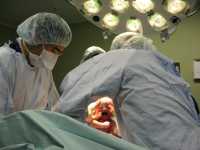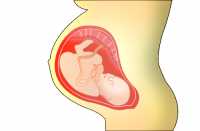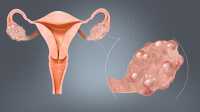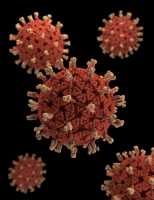Asthma, Author Interviews, JAMA, OBGYNE, Pediatrics, Vitamin D / 12.03.2019
High-Dose Vitamin D During Pregnancy Did Not Reduce Risk of Childhood Asthma
MedicalResearch.com Interview with:
Bo Chawes, MD, PhD, DMSc
Associate Professor
Copenhagen Prospective Studies on Asthma in Childhood
Herlev and Gentofte Hospital
University of Copenhagen
MedicalResearch.com: What is the background for this study? What are the main findings?
Response: There has been a global surge in vitamin D deficiency happening in parallel with an increase in prevalence of childhood asthma, which suggests that low maternal vitamin D levels during pregnancy may increase asthma risk in the child.
Due to that we conducted a randomized double-blinded controlled trial within the Danish COPSAC2010 cohort (www.copsac.com) of 7-fold (2,800 IU/d) vs. standard dose (400 IU/d) of vitamin D supplementation from pregnancy week 24 aiming to reduce offspring asthma risk. At age 3, we observed a non-significant 24% reduced risk of recurrent asthma-like symptoms, ie. recurrent wheeze, in the high-dose vitamin D group. In the current study, we followed 545 of the 581 children in the study till age 6, where an asthma diagnosis can be established and observed no effect of the high-dose vitamin D supplement on the child's risk of asthma.
(more…)

















 Josephine Funck Bilsteen, MSc
Department of Pediatrics, Hvidovre University Hospital, Hvidovre,
Section of Epidemiology, Department of Public Health
University of Copenhagen
Copenhagen, Denmark
MedicalResearch.com: What is the background for this study? What are the main findings?
Response: The background of this study is that there is increasing recognition of the longer-term health and social outcomes associated with preterm birth such as independent living, quality of life, self-perception and socioeconomic achievements. However, much less is known about differences in education and income among adults born at different gestational weeks in the term period.
In this study shorter gestational duration, even within the term range, was associated with lower chances of having a high personal income and having completed a secondary or tertiary education at age 28 years. This is the first study to show that adults born at 37 and 38 completed weeks of gestation had slightly lower chances of having a high income and educational level than adults born at 40 completed weeks of gestation.
Josephine Funck Bilsteen, MSc
Department of Pediatrics, Hvidovre University Hospital, Hvidovre,
Section of Epidemiology, Department of Public Health
University of Copenhagen
Copenhagen, Denmark
MedicalResearch.com: What is the background for this study? What are the main findings?
Response: The background of this study is that there is increasing recognition of the longer-term health and social outcomes associated with preterm birth such as independent living, quality of life, self-perception and socioeconomic achievements. However, much less is known about differences in education and income among adults born at different gestational weeks in the term period.
In this study shorter gestational duration, even within the term range, was associated with lower chances of having a high personal income and having completed a secondary or tertiary education at age 28 years. This is the first study to show that adults born at 37 and 38 completed weeks of gestation had slightly lower chances of having a high income and educational level than adults born at 40 completed weeks of gestation. 









 Dr Sarah Myers PhD
Honorary Research Associate
UCL Department of Anthropology
MedicalResearch.com: What is the background for this study?
Response: Postnatal or postpartum depression is unfortunately common after giving birth; a figure often quoted is 15%, but some studies have found much higher numbers. Postnatal depression is associated with a range of poorer outcomes for mothers and their infants, and the financial costs of treating maternal mental ill health put health services under considerable strain. Studies have found that providing additional emotional support to at risk mothers, for instance via peer support programmes or regular phone calls with health visitors, can reduce the likelihood of them developing the condition. Therefore, it is really important that we understand the full range of risk factors that put women at greater risk of becoming depressed after giving birth.
There is increasing evidence for a link between inflammation and depression, with factors that trigger an inflammatory immune response also increasing the likelihood of depressive symptoms. The opens up the possibility of finding new risk factors for postnatal depression based on known associations with inflammation.
Dr Sarah Myers PhD
Honorary Research Associate
UCL Department of Anthropology
MedicalResearch.com: What is the background for this study?
Response: Postnatal or postpartum depression is unfortunately common after giving birth; a figure often quoted is 15%, but some studies have found much higher numbers. Postnatal depression is associated with a range of poorer outcomes for mothers and their infants, and the financial costs of treating maternal mental ill health put health services under considerable strain. Studies have found that providing additional emotional support to at risk mothers, for instance via peer support programmes or regular phone calls with health visitors, can reduce the likelihood of them developing the condition. Therefore, it is really important that we understand the full range of risk factors that put women at greater risk of becoming depressed after giving birth.
There is increasing evidence for a link between inflammation and depression, with factors that trigger an inflammatory immune response also increasing the likelihood of depressive symptoms. The opens up the possibility of finding new risk factors for postnatal depression based on known associations with inflammation.


